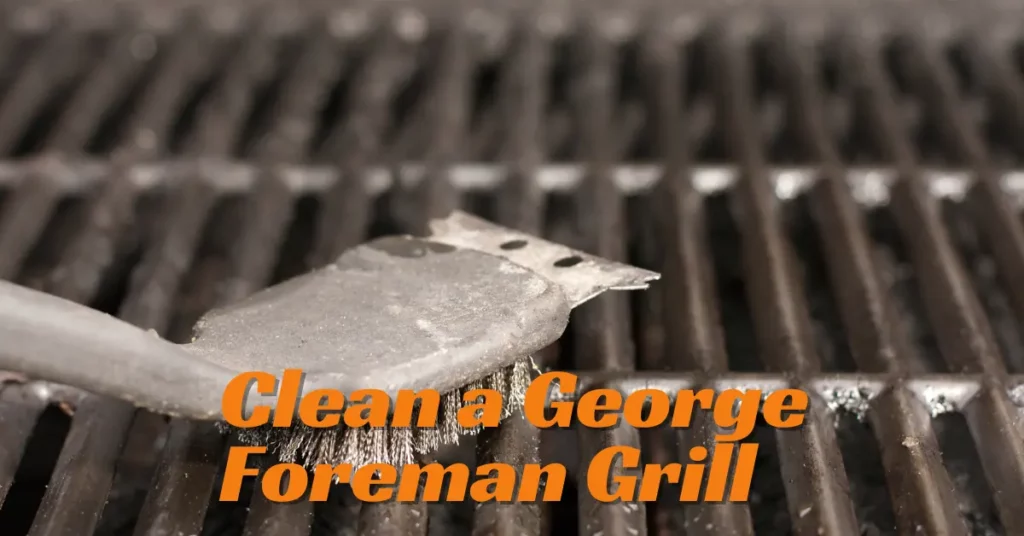This post may contain affiliate links. If you use these links to buy something we may earn a small commission. Thanks.
The George Foreman grill has revolutionized home cooking, making it easy to prepare delicious, healthy meals with minimal effort. However, like any kitchen appliance, regular cleaning is crucial to maintaining its performance and ensuring food safety. Proper cleaning extends the grill’s lifespan, preserves the non-stick coating, and prevents unpleasant odors from food residue.
- Two sponges per pack
- Designed to fit all George Foreman Grill plates
- Unique shape gets directly into the grill grooves for an ideal clean
Whether you own a model with removable plates or a fixed-plate version, this guide will walk you through the best cleaning methods to keep your George Foreman grill in top shape.
Understanding Your George Foreman Grill
Before jumping into the cleaning process, it’s important to know which type of George Foreman grill you own. The cleaning method varies depending on the model:
1. Models with Removable Plates
Some newer George Foreman grills come with detachable plates, making cleaning significantly easier. These plates are often dishwasher-safe, allowing you to clean them effortlessly after each use.
2. Models with Non-Removable Plates
Older models and certain compact versions have fixed grilling plates. Cleaning these requires a different approach, as they cannot be submerged in water or placed in a dishwasher.
Regardless of the type, all George Foreman grills have a drip tray that collects grease and food particles. Cleaning this component is just as essential as cleaning the plates.

General Cleaning Guidelines
Before getting into specific cleaning methods, follow these general rules for safety and efficiency:
- Always unplug the grill and allow it to cool before cleaning. Cleaning a hot grill can cause burns and damage cleaning tools.
- Avoid abrasive cleaners and metal scrapers, as they can scratch the non-stick coating.
- Use soft cloths, sponges, or non-abrasive brushes to prevent damaging the plates.
- Clean immediately after cooking to prevent grease and food particles from hardening.
How to Clean a George Foreman Grill with Removable Plates
If your George Foreman grill has removable plates, follow these steps to clean it effectively:
Step 1: Allow the Grill to Cool
After cooking, turn off and unplug the grill. Let it cool down for about 10-15 minutes. If the plates are still warm but not hot, they’ll be easier to clean.
Step 2: Remove the Plates
Once cooled, detach the grill plates according to the manufacturer’s instructions. Be careful when handling them, as residual grease may still be present.
Step 3: Wash the Plates
- If dishwasher-safe, place the plates in the dishwasher and run a gentle cycle.
- If washing by hand, use warm, soapy water and a soft sponge.
- For stubborn food residue, soak the plates in warm, soapy water for about 10 minutes before scrubbing.
Step 4: Scrub Off Stubborn Residue
If food is stuck to the grill plates, use a non-abrasive scrubber or a plastic scraper to remove it. Avoid using sharp utensils that could damage the non-stick coating.
Step 5: Rinse and Dry
Rinse the plates thoroughly with clean water and wipe them dry with a soft towel. Ensure they are completely dry before reattaching them to the grill.
How to Clean a George Foreman Grill with Non-Removable Plates
Cleaning a model with non-removable plates requires extra care since they cannot be submerged in water. Follow these steps to clean it properly:
Step 1: Wipe the Grill While Warm
After unplugging the grill, wait until it’s warm but not hot. Take a damp paper towel and wipe the plates to remove excess grease.
Step 2: Use a Soapy Sponge
- Dip a soft sponge in warm, soapy water and gently wipe the grill plates.
- Avoid using too much water, as excess liquid could seep into the electrical components.
Step 3: Rinse with a Damp Cloth
After scrubbing, wipe the grill plates with a clean, damp cloth to remove soap residue.
Step 4: Remove Stubborn Residue
- If food is stuck, create a paste with baking soda and water, apply it to the residue, and let it sit for a few minutes.
- Wipe it off with a damp cloth or sponge.
Step 5: Dry the Grill Thoroughly
Use a dry towel to remove excess moisture before storing the grill.
Cleaning the Drip Tray and Exterior
The drip tray collects grease and food particles, making it a critical part of the cleaning process.
Step 1: Empty the Drip Tray
Once cooled, remove the drip tray and discard any grease.
Step 2: Wash the Drip Tray
Wash it with warm, soapy water or place it in the dishwasher (if dishwasher-safe).
Step 3: Wipe the Exterior
Use a damp cloth to wipe the exterior of the grill, removing any grease or food splatters.
Step 4: Ensure Everything is Dry
Before storing, ensure all parts are completely dry to prevent mold or bacterial growth.
Tips for Easy Maintenance
To make cleaning your George Foreman grill easier, follow these maintenance tips:
1. Use Parchment Paper or Aluminum Foil
Placing parchment paper or aluminum foil between the food and the grill plates reduces mess and prevents food from sticking.
2. Lightly Oil the Grill Plates Before Cooking
Using a small amount of cooking oil or non-stick spray can help prevent food from sticking, making cleanup easier.
3. Clean Immediately After Use
Cleaning the grill right after cooking prevents grease from hardening, making it easier to wipe off.
4. Avoid Metal Utensils
Only use plastic, silicone, or wooden utensils to protect the non-stick coating.
5. Perform Deep Cleaning Monthly
If you use your grill frequently, perform a deep clean once a month by using baking soda or a vinegar solution to break down grease buildup.
Conclusion
Keeping your George Foreman grill clean not only extends its lifespan but also ensures that your food remains safe and flavorful. Whether you have a model with removable or fixed plates, regular cleaning is simple when done correctly. By following these step-by-step cleaning methods and incorporating maintenance tips, you can enjoy hassle-free grilling and delicious meals for years to come.
With proper care, your George Foreman grill will continue to deliver perfectly cooked meals while remaining in excellent condition.

